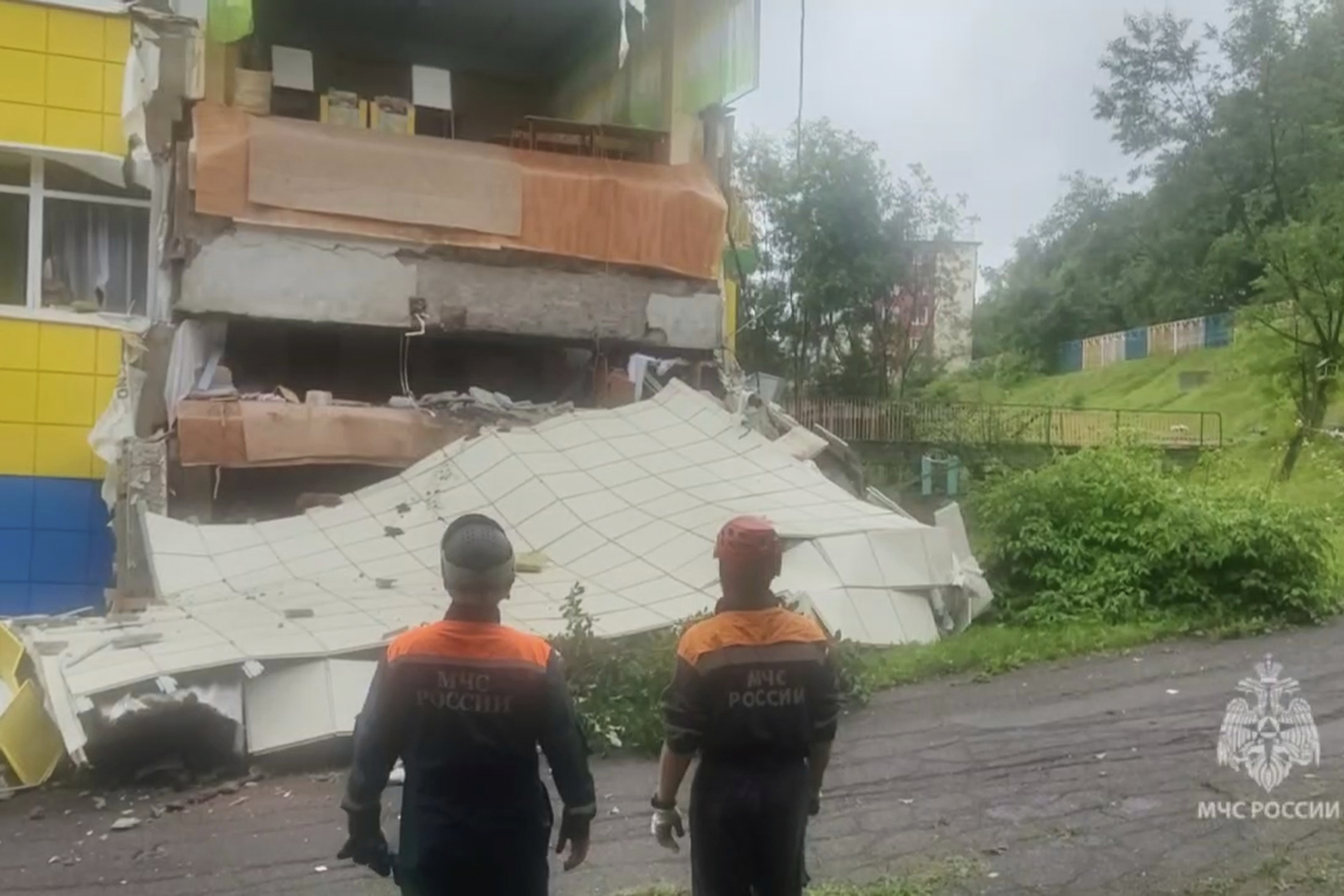
A tsunami that hit Russia’s Pacific coast on Wednesday damaged the country’s Rybachiy nuclear submarine base on the Kamchatka Peninsula, satellite imagery suggests.
The images were taken by the U.S. space technology company Umbra Space and posted by engineer Logan Garbarini who compared them to Google/Maxar images from earlier this year to show what the base looked like before and after the tsunami hit.
Why it Matters
The Rybachiy base is the primary housing facility for Russia’s Pacific Fleet nuclear submarines and serves as one of the closest Russian military outposts to the United States. The base’s role in Russian naval strategy makes any threat to its operational capabilities significant, not only for Russia but also for U.S.-Russia security dynamics.
What To Know
The tsunami followed a 8.8 magnitude offshore earthquake centered roughly 75 miles from the base, impacting the country’s Pacific coastline in the early hours of Wednesday.
The Rybachiy nuclear submarine base, located inside Avacha Bay, is believed to have endured a direct hit from the waves within 15 minutes of the initial quake, according to analysis by the British newspaper The Telegraph.
Images show that a pier section at the base was visibly bent and appeared detached from its moorings.
Got the images back from Rybachiy Submarine Base (52.9112°, 158.49244°). Acquired 2025-07-30 10:18Z. Some notable changes: looks like a pier snapped in half from the wave.
First image is Google/Maxar from earlier this year, second image is Umbra SAR post-event. https://t.co/cfCwCMPV9b pic.twitter.com/ARrXJ79e5u
— Logan Garbarini (@LoganGarbarini) July 31, 2025
Although two Yasen-class nuclear-powered submarines were docked at the facility before the incident, there was no evidence they sustained damage, Dr. Sidharth Kaushal, a research fellow at the Royal United Services Institute, told The Telegraph.
Outside the base, other coastal areas, including the port of Severo-Kurilsk, experienced significant flooding and infrastructure destruction, with local footage showing waves up to five meters high.
Russia’s emergency alert systems and construction standards for critical infrastructure, which account for seismic threats, were credited with avoiding casualties at Rybachiy.
Newsweek has contacted Russia’s Defense Ministry, via email, for comment.

AP
What People Are Saying
Retired Royal Navy commander Tom Sharpe said: “If the base assumption is that a wave got in there and bent that jetty then yes, what else did it do?”
The Kremlin said that regional authorities on Kamchatka were well prepared for the quake.
Kremlin spokesman Dmitry Peskov noted that the warnings were issued in time, and people were quickly evacuated from dangerous areas. He added that the buildings proved resilient to shocks.
What Happens Next
Repair efforts appeared to be underway, as satellite images identified a tugboat operating near the damaged pier. Analysts predicted that the Russian navy would assess the current construction standards for piers at Rybachiy, and possibly update them, to mitigate future vulnerabilities.
Meanwhile, there has been no official indication of any impact on Russian military operations, and global monitoring continues for further aftershocks or related events in the region.
The Pacific seismic activity, which also triggered evacuations as far as Japan, Alaska, Hawaii, and the Pacific coast of South America, remains of concern for both regional stability and critical infrastructure readiness.




